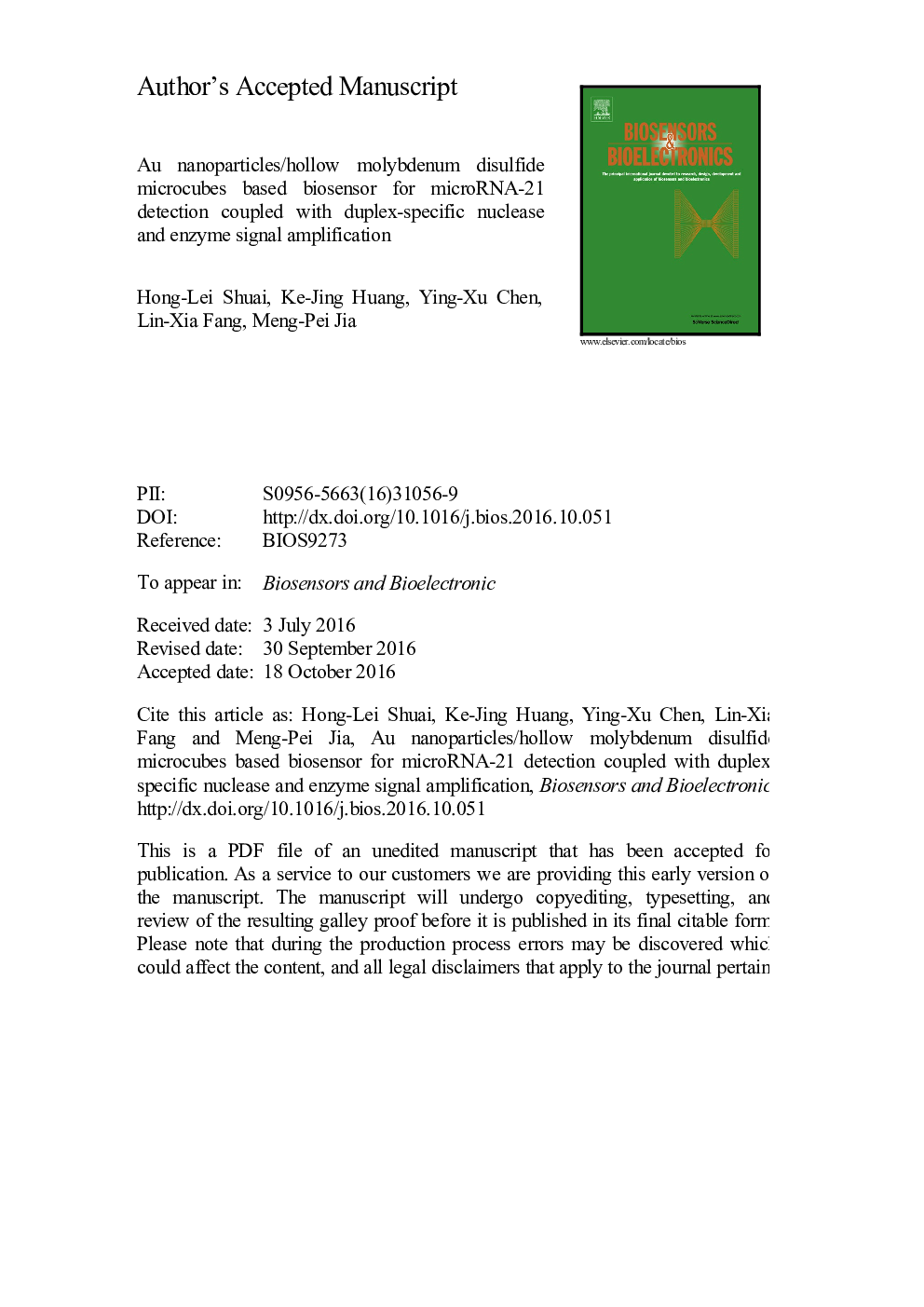| Article ID | Journal | Published Year | Pages | File Type |
|---|---|---|---|---|
| 5031466 | Biosensors and Bioelectronics | 2017 | 30 Pages |
Abstract
An ultrasensitive electrochemical biosensor for detecting microRNAs is fabricated based on hollow molybdenum disulfide (MoS2) microcubes. Duplex-specific nuclease, enzyme and electrochemical-chemical-chemical redox cycling are used for signal amplification. Hollow MoS2 microcubes constructed by ultrathin nanosheets are synthesized by a facile template-assisted strategy and used as supporting substrate. For biosensor assembling, biotinylated ssDNA capture probes are first immobilized on Au nanoparticles (AuNPs)/MoS2 modified electrode in order to combine with streptavidin-conjugated alkaline phosphatase (SA-ALP). When capture probes hybridize with miRNAs, duplex-specific nuclease cleaves the formative duplexes. At the moment, the biotin group strips from the electrode surface and SA-ALP is incapacitated to attach onto electrode. Then, ascorbic acids induce the electrochemical-chemical-chemical redox cycling to produce electrochemical response in the presence of ferrocene methanol and tris (2-carboxyethyl) phosphine. Under optimum conditions, the proposed biosensor shows a good linear relationship between the current variation and logarithm of the microRNAs concentration ranging from 0.1Â fM to 0.1Â pM with a detection limit of 0.086Â fM (S/N=3). Furthermore, the biosensor is successfully applied to detect target miRNA-21 in human serum samples.
Related Topics
Physical Sciences and Engineering
Chemistry
Analytical Chemistry
Authors
Hong-Lei Shuai, Ke-Jing Huang, Ying-Xu Chen, Lin-Xia Fang, Meng-Pei Jia,
